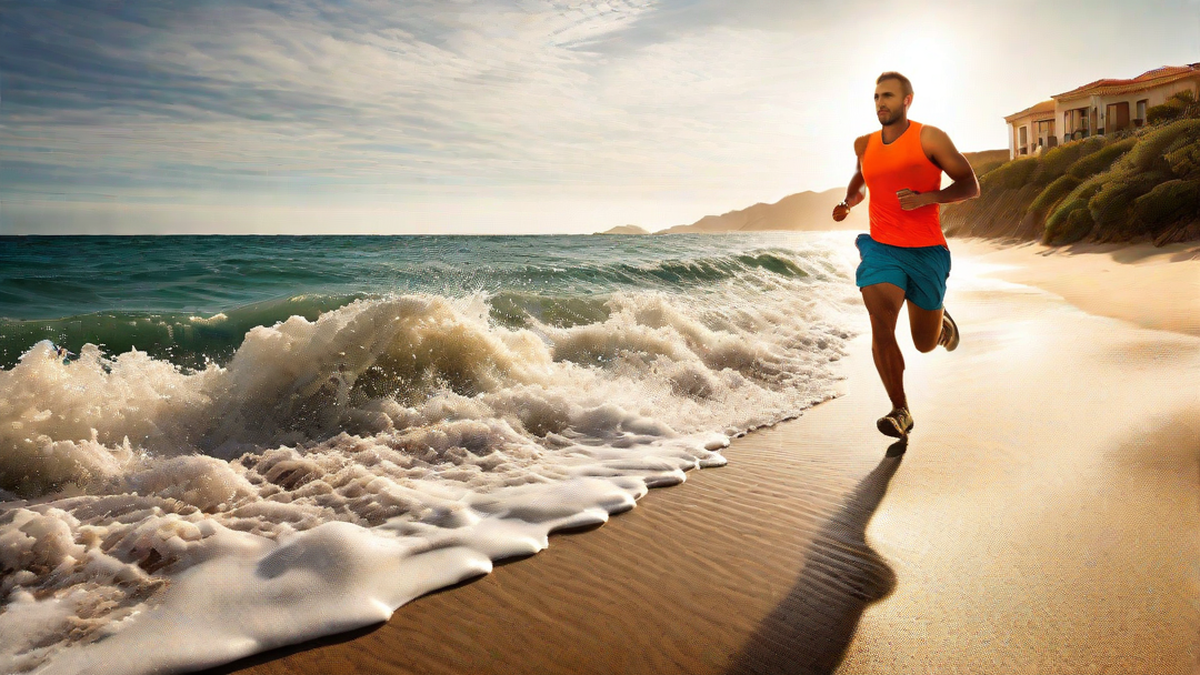Running on the beach is a popular form of exercise that many people enjoy. Personally, I find it to be a refreshing and invigorating activity. There is something magical about the combination of the sand, the sea breeze, and the sound of crashing waves that makes running on the beach a unique experience.
But is running on the beach good for you? Let’s delve into the details and find out.
The Benefits of Running on the Beach
Running on the beach offers several benefits that set it apart from running on other surfaces. One of the main advantages is the increased resistance provided by the sand. The soft and unstable surface engages your muscles in a different way compared to running on concrete or a treadmill. This can help to strengthen your leg muscles, improve balance, and enhance overall stability.
Another benefit is the natural exfoliation effect of the sand. As you run, the sand gently scrubs your feet, leaving them feeling smooth and rejuvenated. It’s like getting a mini foot massage while you exercise!
Running on the beach also provides a low-impact workout for your joints. The sand absorbs much of the impact when your feet hit the ground, reducing stress on your knees and ankles. This makes it a great option for individuals with joint pain or those recovering from injuries.
Challenges of Running on the Beach
While running on the beach offers numerous benefits, it is not without its challenges. The uneven surface of the sand requires more effort and can be tiring, especially if you’re used to running on flat pavement. It may take some time to adjust to the higher energy expenditure and develop the necessary strength and endurance.
In addition, running on soft sand can be more demanding on your calf muscles compared to running on firmer ground. The constant engagement of these muscles can lead to soreness, especially if you’re not accustomed to the specific demands of beach running. It’s important to listen to your body and gradually increase your mileage to avoid overuse injuries.
Tips for Running on the Beach
If you’re considering giving beach running a try, here are a few tips to enhance your experience:
- Start slow: Begin with shorter distances and gradually increase your mileage over time. This will allow your body to adapt to the unique demands of beach running.
- Choose the right shoes: Opt for lightweight and flexible shoes that provide good traction on sandy surfaces. Running barefoot is also an option, but it may require additional strengthening of your foot muscles.
- Stay hydrated: Running on the beach can be hot and sweaty, so make sure to bring water or plan your run near a water source.
- Protect your skin: Apply sunscreen to exposed areas of your skin to protect it from the sun’s harmful rays. The reflective nature of the sand can increase the risk of sunburn.
- Be mindful of tides: Check the tide schedule before heading out for a run to avoid getting stranded or having to navigate through wet and potentially slippery areas.
Conclusion
Running on the beach can be a wonderful and beneficial form of exercise. It offers a unique experience with its beautiful scenery, increased resistance, and low-impact nature. However, it may not be suitable for everyone, especially those with certain health conditions or injuries. As with any form of exercise, it’s important to listen to your body and make modifications as needed. So, if you’re up for an exciting and challenging workout, why not lace up your running shoes and hit the beach?

